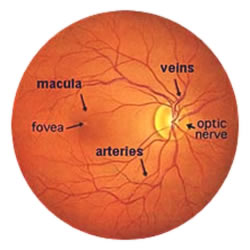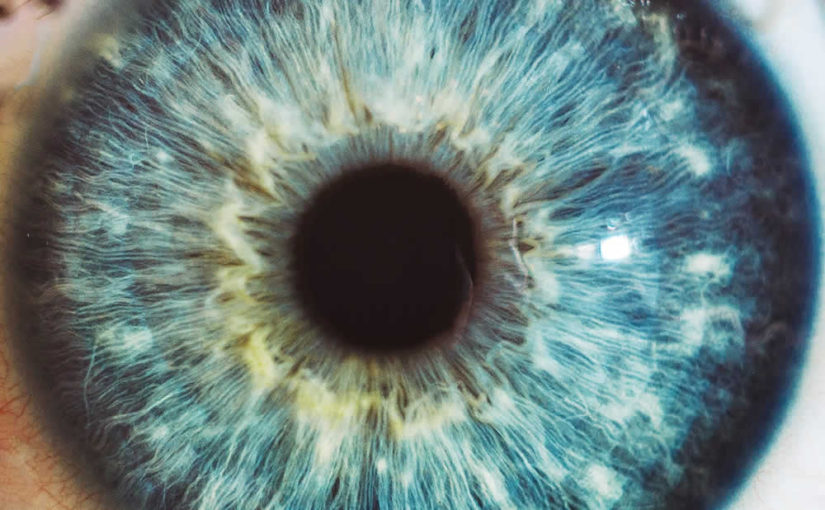Age Related Macular Degeneration is a common condition that affects the central part of the retina (the macula lutea) as people get older.

ARMD is commonly divided into two types, dry and wet. Dry is a very slowly developing wear and tear of the retina at the back of the eye. Most people have the dry form (90%), and in the vast majority of cases this has little effect on eyesight.
By the age of 70, 1 in 3 people have some signs of ageing at the back of the eye. Very occasionally in the dry form the macula can wear out (atrophy). This can slowly affect central vision.
Some people develop the wet form where new blood vessels grow under the centre of the retina. This can make central vision worse over a matter of weeks. All people with the wet form initially had the dry form.

The abnormal blood vessels at the back of the eye are classified into 2 main groups by their appearance on a special photograph of the back of the eye called a fluorescein angiogram. These are called classic and occult.
“Thank you for your letter of introduction to Mr Richard Antcliff at the Circle Hospital. Due to his skill, the results of my cataract removals have been beyond my expectations. To be without the need to wear glasses and able to see, thread a needle and read most small print is a joy.” Mrs L, Bath
How can wet ARMD be treated?
Argon Retinal Laser
The earliest treatment for wet ARMD was Argon Retinal Laser. This destroys the blood vessels but also destroys the overlying retina leaving a blind spot (scotoma). This means that only blood vessels away from the centre can be treated. Even when the laser is successful, there is a high chance the blood vessels will come back (more than 50% over 2 years). Most blood vessels occur under the centre so laser is not appropriate for the majority of cases.
Photodynamic Therapy
The next treatment that became available was photodynamic therapy (PDT). This works best for the treatment of classic blood vessels. This involves having an injection of a light sensitizing dye called verteporfin (trade name visudyne) into a vein. This dye travels round the body and sticks to the abnormal blood vessels at the back of the eye. A cold laser of a specific wavelength of light is then shone at the abnormal blood vessels 15 minutes after the beginning of the injection. This activates the drug and makes it release noxious chemicals called free radicals. These chemicals damage the blood vessels.
The treatment is a course of assessments and possible treatments every three months for 2 to 3 years. The treatment reduces the chance of losing a lot of vision, but on average eyesight still gets worse.
Anti-Vascular Endothelial Growth Factor (VEGF)
The most modern treatment for wet ARMD is Anti-VEGF injections. There are 4 drugs used to treat this, Lucentis, Eylea, Avastin and Beovu, with more in development. These involve a course of injections into the vitreous of the eye. Initial trials suggested that this went on for 2 years. As experience has grown it has become evident that for most patients treatment can go on for much longer than this.
How can I prevent ARMD?
Smoking has been shown to increase the risk of developing ARMD. In some cases multivitamins can reduce the risk, but a diet rich in vegetables and fruit is also important. Red, green and yellow fruits are good for the eye, as are green vegetables, particularly spinach and kale top.
How can dry ARMD be treated?
Currently there are no effective treatments for dry ARMD although several drugs are in development.
Useful links
Macular Society
www.macularsociety.org
Telephone: 0300 3030 111
Email:
Royal National Institute of Blind People (RNIB)
www.rnib.org.uk
Telephone: 0303 123 9999
Email:
